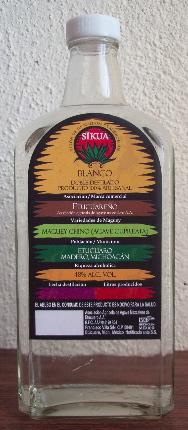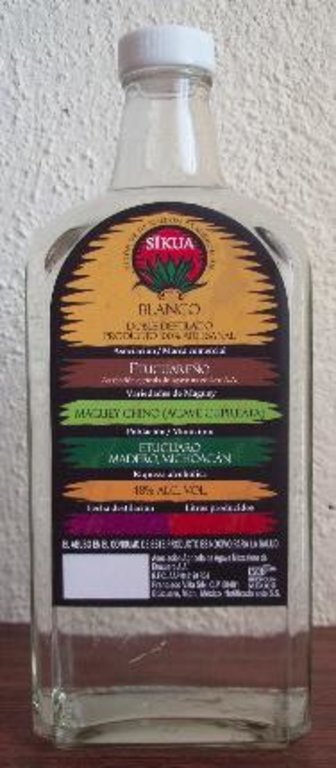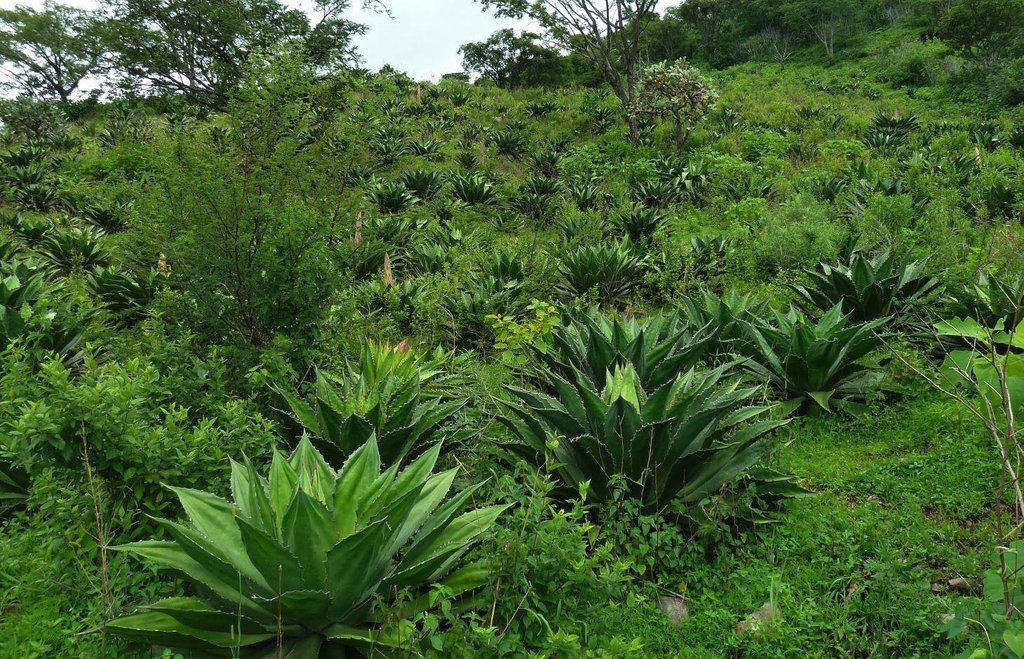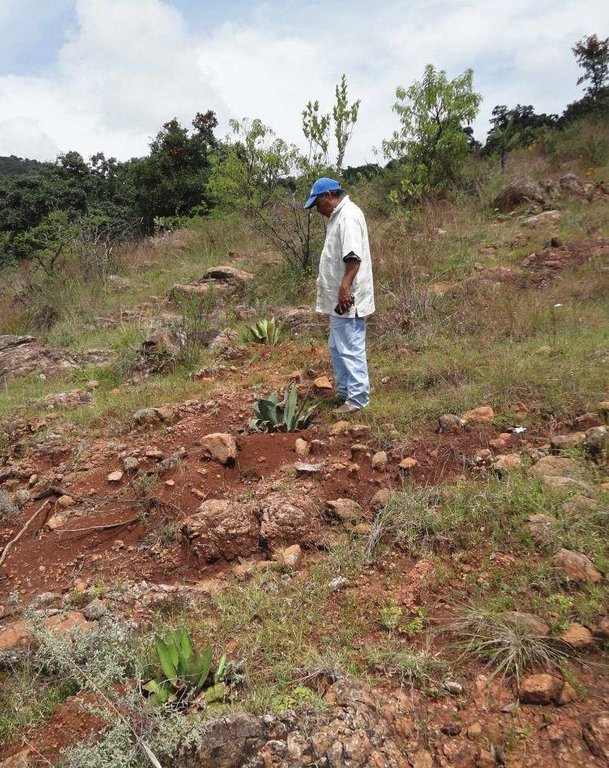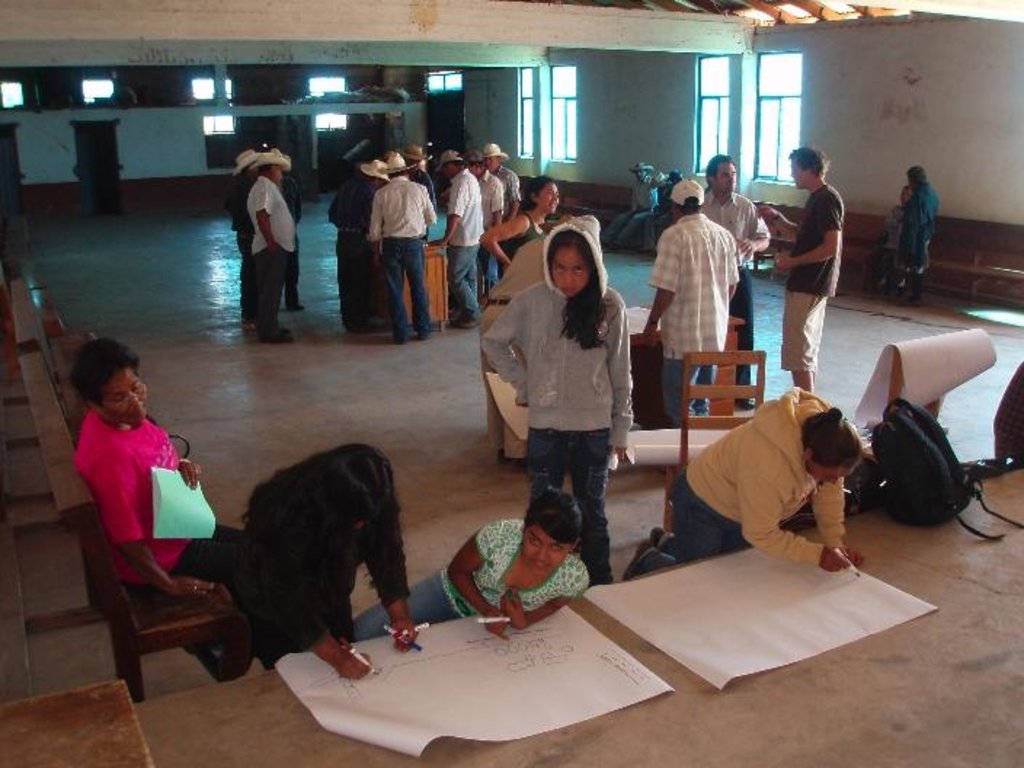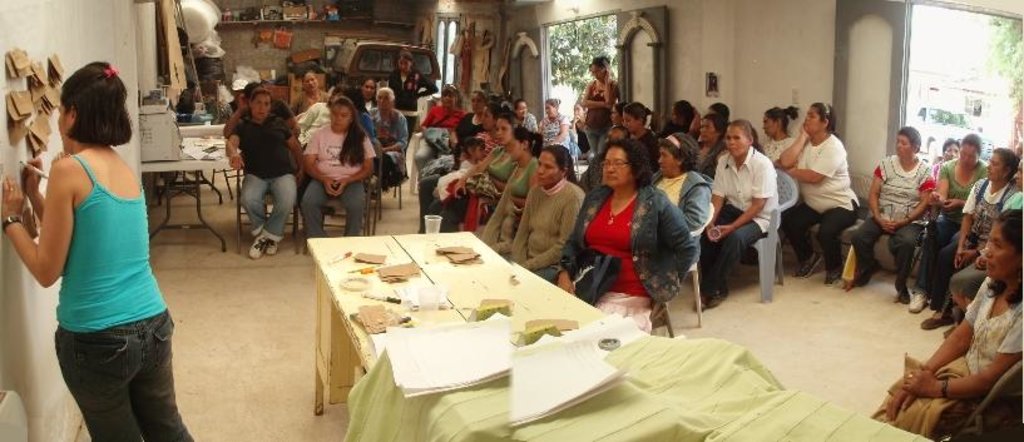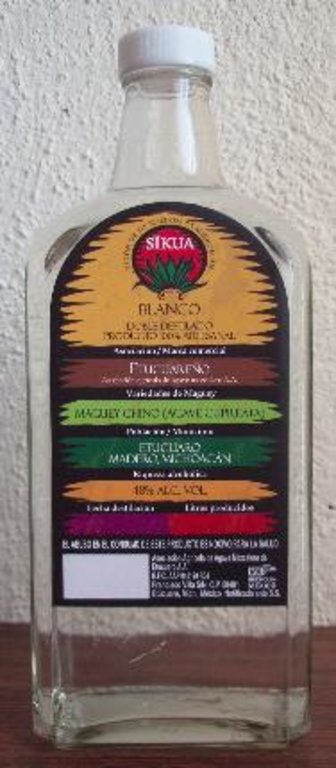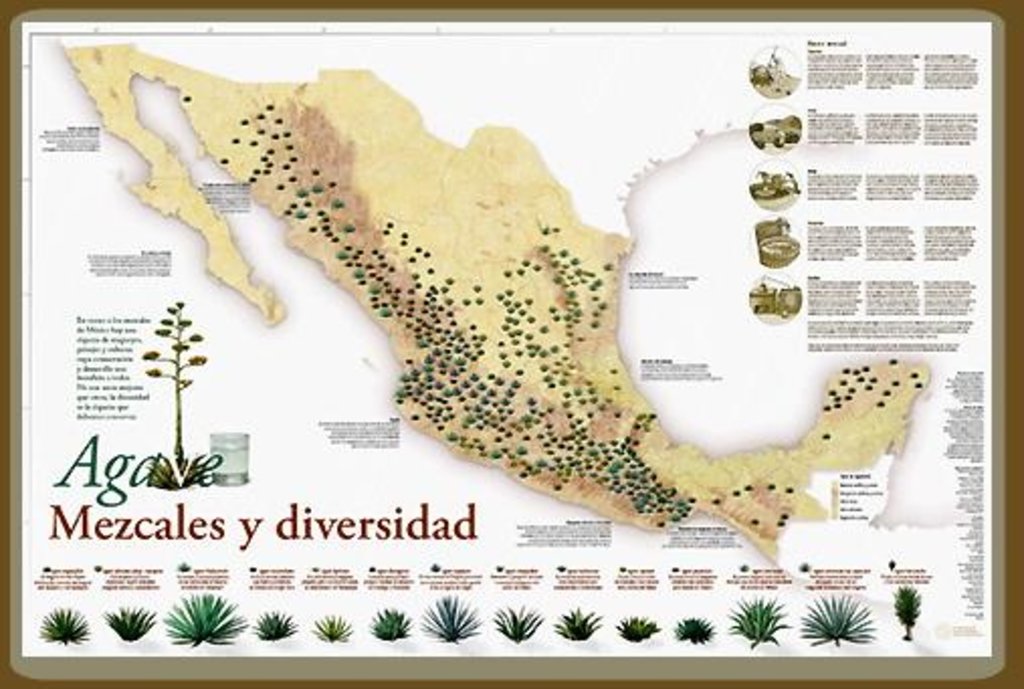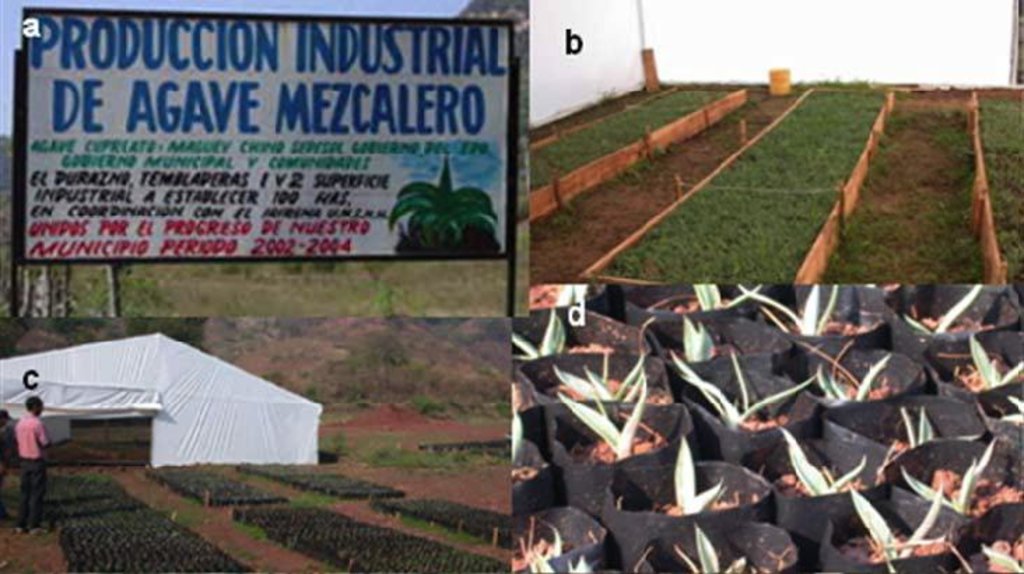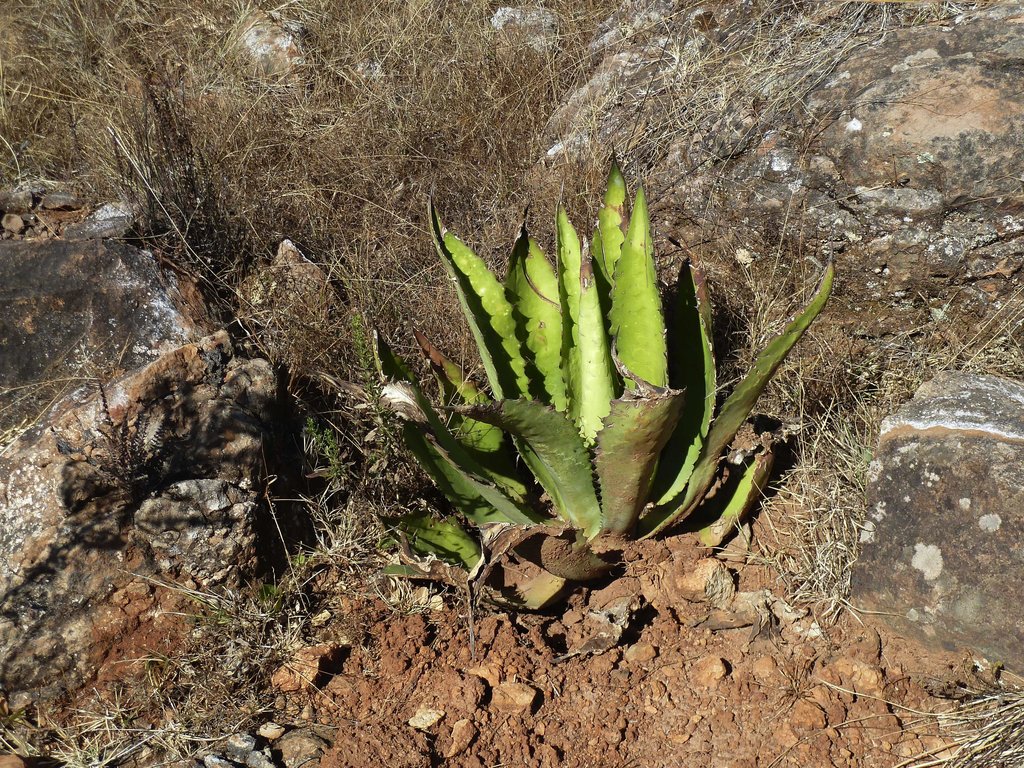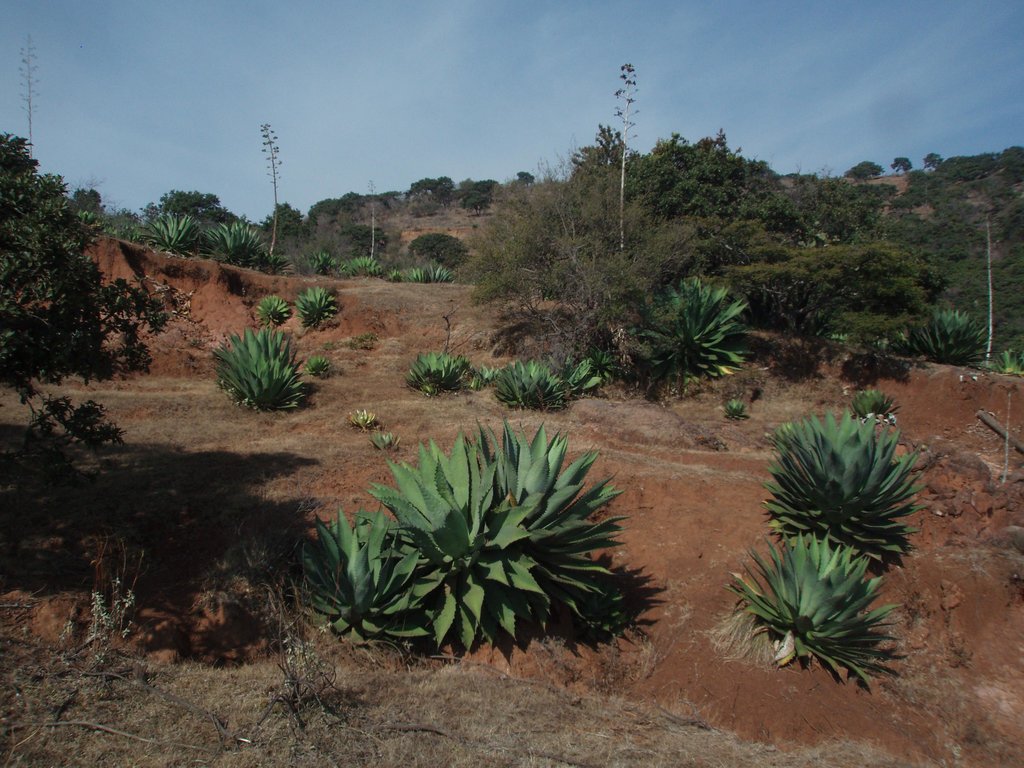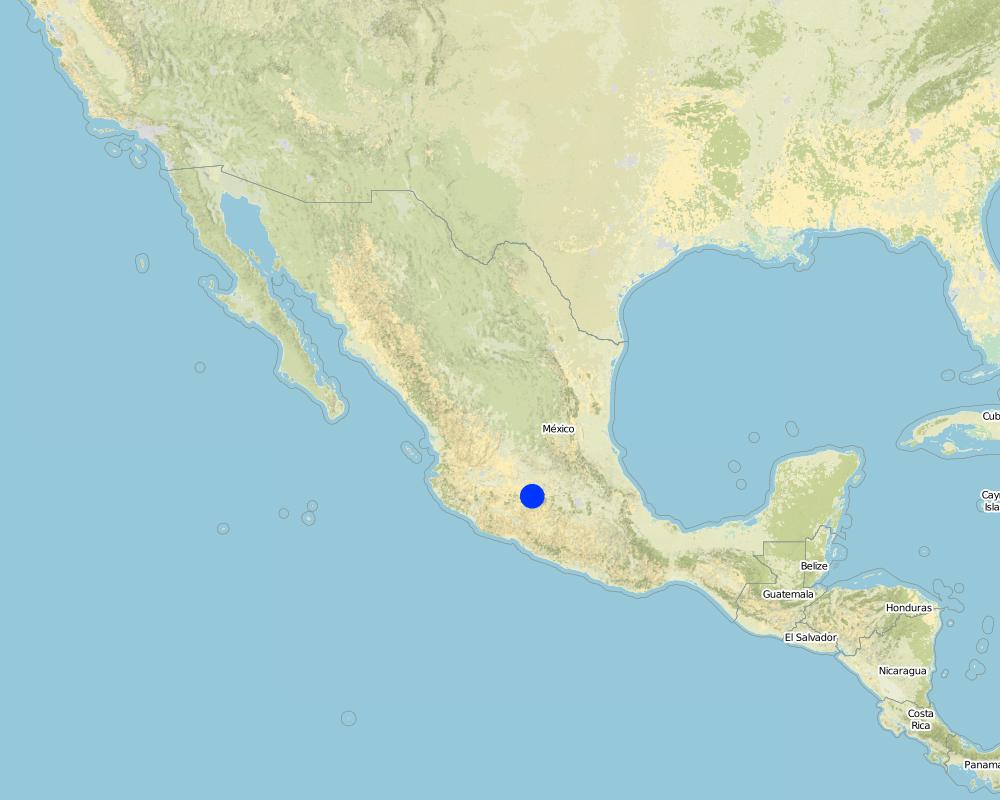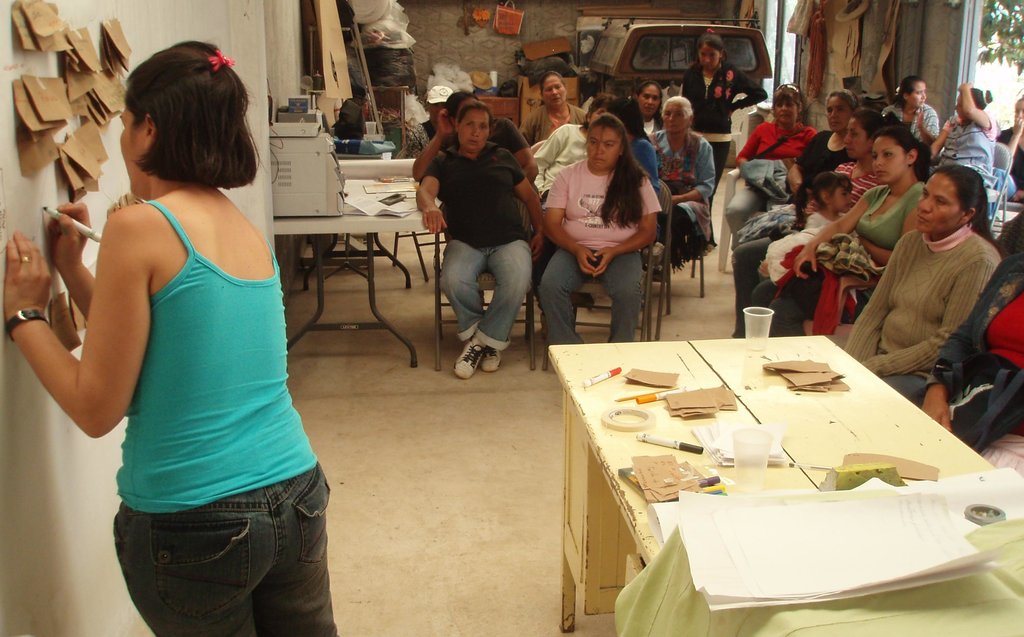Participative actions for economic benefits of agave forestry [墨西哥]
- 创建:
- 更新:
- 编制者: Christian Prat
- 编辑者: –
- 审查者: Fabian Ottiger
Recuperación de tierras degradadas por agaveforestería a través de acciones participativas para beneficios económicos (Spanish)
approaches_2436 - 墨西哥
查看章节
全部展开 全部收起1. 一般信息
1.2 参与方法评估和文件编制的资源人员和机构的联系方式
SLM专业人员:
Martínez Palacios Alejandro
Tel (443) 334-0475, Ext. 119
apalacios56@gmail.com
Instituto de Investigaciones Agropecuarias y Forestales, Universidad Michoacana de San Nicolás de Hidalgo (IIAF-UMSNH)
Morelia-Zinapecuaro, Tarímbaro, Michoacán 58330, México
墨西哥
SLM专业人员:
Ríos Patrón Eduardo
01 (443) 3226017
eduardo.rios@semarnat.gob.mx
Delegación de SEMARNAT (Secretaria del Medio Ambiente) en Michoacán, Unidad de Planeación y Política Ambienta
Morelia, Michoacán
墨西哥
有助于对方法进行记录/评估的项目名称(如相关)
DESIRE (EU-DES!RE)有助于对方法进行记录/评估的机构名称(如相关)
Institut de recherche pour le développement IRD (Institut de recherche pour le développement IRD) - 法国有助于对方法进行记录/评估的机构名称(如相关)
Instituto de Investigaciones Agropecuarias y Forestales (IIAF) - 墨西哥有助于对方法进行记录/评估的机构名称(如相关)
SECRETARÍA DE MEDIO AMBIENTE Y RECURSOS NATURALES (SECRETARÍA DE MEDIO AMBIENTE Y RECURSOS NATURALES) - 墨西哥1.3 关于使用通过WOCAT记录的数据的条件
编制者和关键资源人员接受有关使用通过WOCAT记录数据的条件。:
是
1.4 SLM技术问卷的参考

Land reclamation by agave forestry with native species [墨西哥]
Agave forestry land reclamation system with native agaves, trees, shrubs and grasses planted through participatory action for a sustainable production of mezcal and other products in order to generate high incomes for farmers.
- 编制者: Christian Prat
2. SLM方法的描述
2.1 该方法的简要说明
Land reclamation with local agave (to produce Mezcal) associated with trees, shrubs and grasses planted through participative actions for economic benefit.
2.2 该方法的详细说明
该方法的详细说明:
Aims / objectives: Rehabilitation of degraded land is achieved by using native agave (Agave inaequidens) and trees, shrubs and grasses which creates, over the medium-term (7-10 year), a sustainable production of an alcoholic drink (mezcal) and/or pharmaceutical products and/or fodder for cattle and/or wood. Further objectives are water conservation, biodiversity, generation of permanent employment (plant reproduction, planting, alcoholic drink/ pharmaceutical production), carbon sequestration, generation of higher family incomes and a reduction in the amount of livestock and number of animals and uncontrolled grazing (the main cause of soil erosion). These positive impacts of the approach contribute to preventing the rural population from emigrating to the cities or abroad.
Methods: Coordination, cooperation and systematic participatory process among stakeholders are the basis of the approach. Promoting participatory processes occurs through workshops, interviews with community leaders, field visits conducted with owners of the land to recognize the problems and identify areas of opportunity, training courses, exchange of experiences with other people who are developing similar projects at different stages. Technical advice and the links with scientists, technicians and public officials in charge of project beneficiaries is given under a two-way process of mutual learning and seeking to strengthen self-management capabilities that inspires innovation at the different stages. The key to success of a participatory approach lies in liberating and developing community leadership and self-organization processes.
Stages of implementation: The project is part of a regional planning context and a basin scale approach of intervention. The watershed of the site project is included in a special programme of the Ministry of Environment and Natural Resources of Mexico which gives the opportunity of developing and financing a medium- to long-term project. The participatory process is delivered from planning, organizing, programming and implementing to financing, training, monitoring and disseminating the results. The strategic perspective of the project includes capacity-building of land owners for greenhouse and nursery management, the technical assessment for the improvement of the agave forestry system, guidance with quality production of mezcal and marketing support to diversify products and sell them in order to make the project financially self-sustaining and profitable. All these stages range from short- to medium- and long-term.
Role of stakeholders: The government finances the project through grant resources, promotes the participation of beneficiaries and monitors it, seeking the management of resources and intersectoral participation. Scientists and academics share their knowledge, techniques and methodologies for implementation, improvement, evaluation and monitoring of each stage, and they support capacity-building of the community. The owners of the land and the community implement and develop each of the activities from building and maintaining the greenhouse and nursery, planting agaves, trees and shrubs, to the use and production of mezcal and other commercial products.
2.3 该方法的照片
2.5 采用该方法的国家/地区/地点
国家:
墨西哥
区域/州/省:
Mexico/Michoacán state
有关地点的进一步说明:
Morelia
Map
×2.6 该方法的开始和终止日期
注明开始年份:
2009
终止年份(若不再采用该方法):
2012
2.7 方法的类型
- Traditional, innovative and project based
2.8 该方法的主要目的/目标
The Approach focused mainly on other activities than SLM (registered alcohol production, cattle fodder, medicine uses, biodiversity conservation, wood)
Rehabilitation of degraded land is done using native agave (Agave inaequidens), trees, shrubs and grasses which creates, over the medium-term (7-10 years) sustainable production of an alcoholic drink (mezcal) and/or pharmaceutical products and/or fodder for cattle and/or wood.
The SLM Approach addressed the following problems: Social and economic problems: Agriculture and livestock in the region are primarily for subsistence. The level of poverty and marginalization of the people of the project site is medium to high with low education levels. People need to migrate to the cities or outside the country to supplement the family budget. Prices of farmer productions are too low and do not allow economic survival. Therefore, only 10 to 20% of the total incomes are derived from agricultural products! This explains why the children of farmers do not want to become farmers and lands are less and less cultivated. In correlation, as the livestock price is good and animals can be raised with little input of time. Thus the number of animals is increasing and as they are grazing everywhere, they have a strong soil erosion impact.
2.9 推动或妨碍实施本办法所适用的技术的条件
社会/文化/宗教规范和价值观
- 阻碍
The social arrangement of the “ejido” requires all people to agree on moving forward with different activities. The level of education and migration.
Treatment through the SLM Approach: Systematic and constant promotion of the participatory process through community assembly meetings, workshops, community exchange travel, experiences and training. Promote complementarity and targeting of resources from other sectors.
财务资源和服务的可用性/可得性
- 阻碍
Potential constraints in the final stages of the project when receiving revenue from the sale of mezcal and other products.
Treatment through the SLM Approach: Strengthening capacities of organization and administration, promoting transparency and accountability in the community. Development and consolidation of the formation of cooperatives as an alternative to social enterprise.
机构设置
- 阻碍
The risk that the six-year change in administration does not follow the care programme in the area.
Treatment through the SLM Approach: Strengthening self-management capabilities of the group of beneficiaries of the project. Involving other government levels and sectors funding training and monitoring of subsequent stages.
法律框架(土地使用权、土地和水使用权)
- 启动
The existing land ownership, land use rights / water rights greatly helped the approach implementation
- 阻碍
Federal, state and municipal regulations for preventing clearance of woods, biodiversity uses, forest exploitation, water concessions and water quality must be applied. Mexican official standards of mezcal production must be used
Treatment through the SLM Approach: Conduct a thorough review with a focus on prospective different stages of a project and the legal implications and regulations that must be met at these stages. Inform land owners about their rights, obligations and mechanisms of fulfilment.
了解SLM,获得技术支持
- 阻碍
Lack of validation and technology transfer of agave forestry. Lack of information on the requirements of these species of agave. Potential risk to move from non-intensive system to an intensive one due to economic and market factors.
Treatment through the SLM Approach: Development of technological packages for an agave forestry system as a basis for the production of mezcal, considering soil erosion levels and system arrangements. Promote only ecologically diversified, non-intensive systems. Design environmental and ecological monitoring stage.
3. 相关利益相关者的参与和角色
3.1 该方法涉及的利益相关者及其职责
- 当地土地使用者/当地社区
Traditionally, women have been more responsible for the house and the area close to it. They are less involved in the field activities of the agave forestry project, but are involved in production and commercialization. On the other hand, women are worried about the possible impacts of alcoholic drink on communities, because alcoholism is a social concern. There has been no discrimination inside the communities up to now
- SLM专家/农业顾问
- 教师/学龄儿童/学生
- 私营部门
- 地方政府
- 国家政府(规划者、决策者)
- 国际组织
- administration and authorities; women
3.2 当地土地使用者/当地社区参与该方法的不同阶段
| 当地土地使用者/当地社区的参与 | 指定参与人员并描述活动 | |
|---|---|---|
| 启动/动机 | 自我动员 | Balance alternatives and take decision to test the agave forestry |
| 计划 | 互动 | Planning, organizing and programming the project, defining responsibilities, time and initial investment. Identification of agave seeds and a proper place to install the greenhouse and nursery. |
| 实施 | 自我动员 | Building and maintenance of greenhouse and nursery, selecting the sites for the plantation and planting. Training of land users by other land users to produce mescal according to quality rules for a recognized product. |
| 监测/评估 | 自我动员 | In each field: monitoring plant growth, status of the protection against cattle grazing, indications of soil erosion. |
| Research | 互动 | Monitoring by some land users of some parameters defined by scientists. |
3.3 流程图(如可用)
具体说明:
Workshop with women from eight rural communities of the Calabozo - Potrerillos watershed. They are defining their problems and proposing solutions. EU-DESIRE project and small catchments SEMARNAT project, San Rafael Coapa community, Morelia municipality, April 2010
作者:
Christian Prat
3.4 有关SLM技术选择的决策
是否就技术的选择做出了决定?:
- all of them
解释:
It is the result of proposals, visits and discussions between all the stakeholders, so it is a joint decision.
Decisions on the method of implementing the SLM Technology were made by all of them. It is the result of proposals, visits and discussions between all the stakeholders, so it is a joint decision.
4. 技术支持、能力建设和知识管理
4.1 能力建设/培训
是否为土地使用者/其他利益相关者提供培训?:
是
明确受训人员:
- 土地使用者
- 现场工作人员/顾问
培训形式:
- 在职
- 公开会议
涵盖的主题:
Training focused on explaining which plants to select for seeds, how to create and maintain plants in greenhouses, how to transplant them and how to organise their planting in the field depending on the aim (scattered for production or in rows to create a green barrier formed from trees, shrubs, grasses and agaves)
4.2 咨询服务
土地使用者有权使用咨询服务吗?:
是
指明是否提供了咨询服务:
- 在土地使用者的土地上
说明/注释:
Name of method used for advisory service: Plant (native agave, trees, shrubs, grasses) production advises; Key elements: Plant selection, Management of plants under greenhouse
Advisory service is very adequate to ensure the continuation of land conservation activities
4.3 机构强化(组织发展)
是否通过这种方法建立或加强了机构?:
- 是,非常
具体说明机构的强化或建立程度:
- 本地
具体说明支持类型:
- 财务
- 能力建设/培训
- 设备
- transport
4.4 监测和评估
监测和评估是该方法的一部分吗?:
是
注释:
bio-physical aspects were regular monitored by project staff, government, land users through observations; indicators: Biodiversity, water quality, water usage, degradation and soil rehabilitation indicators.
bio-physical aspects were regular monitored by project staff, government through measurements; indicators: Participatory collection of data by landowners, public officials and technicians.
technical aspects were regular monitored by project staff, government, land users through observations; indicators: Indicators of improvement of technical capabilities of the nursery operators, capacity building for the production of mezcal and other products and comparative indicators of different arrangements of agrosystems based on other biophysical and economic indicators.
socio-cultural aspects were regular monitored by project staff, government through measurements; indicators: Migration, poverty, education indicators by surveys and statistical models
economic / production aspects were regular monitored by project staff, government through measurements; indicators: Indicators of profitability, revenue from each stage per person, economic valuation of soil improvement
area treated aspects were regular monitored by project staff, government through measurements
There were no changes in the Approach as a result of monitoring and evaluation
There were no changes in the Technology as a result of monitoring and evaluation
4.5 研究
研究是该方法的一部分吗?
是
明确话题:
- 经济/市场营销
- 生态学
- 技术
提供进一步的细节,并指出是谁做的研究:
No information exists about the production conditions of this agave species, especially concerning the sugar quantity and quality produced by the plant which will be used for alcoholic drink production (e.g. whether it grows better in the shade or in full sunlight, or more appropriate for mature or young plants).
Research was carried out on station
5. 融资和外部物质支持
5.1 该方法中SLM组成部分的年度预算
如果不知道准确的年度预算,请给出一个范围:
- 2,000-10,000
注释(例如主要的资助来源/主要捐助者):
Approach costs were met by the following donors: government (estimated budget by ha, without alcoholic drink production ): 80.0%; local government (district, county, municipality, village etc): 10.0%; local community / land user(s): 10.0%; other
5.2 为土地使用者提供财政/物质支援
土地使用者是否获得实施该技术的财政/物质支持?:
是
5.3 对特定投入的补贴(包括劳动力)
- 设备
| 具体说明哪些投入得到了补贴 | 程度如何 | 对补贴做出具体说明 |
|---|---|---|
| 工具 | 部分融资 | shovel, hammer, pickaxe |
- 农业
| 具体说明哪些投入得到了补贴 | 程度如何 | 对补贴做出具体说明 |
|---|---|---|
| plastic bags for plants, soil, compost | 部分融资 | |
- 建筑
| 具体说明哪些投入得到了补贴 | 程度如何 | 对补贴做出具体说明 |
|---|---|---|
| 石料 | 部分融资 | |
| 木材 | 部分融资 | |
| metal tube, plastic for greenhouse | 部分融资 | |
5.4 信用
是否根据SLM活动的方法给予信用值?:
否
6. 影响分析和结论性陈述
6.1 方法的影响
该方法是否帮助土地使用者实施和维护SLM技术?:
- 否
- 是,很少
- 是,中等
- 是,支持力度很大
it is a new and easily-implemented technology with a high economic potential (commercialisation of products of very high value)
it is too early to judge, but it is supposed to improve it
6.2 土地使用者实施SLM的主要动机
- 增加生产
- 增加利润(能力),提高成本效益比
- 支付/补贴
- 环境意识
- well-being and livelihoods improvement
6.3 方法活动的可持续性
土地使用者能否维持通过该方法实施的措施(无外部支持的情况下)?:
- 是
6.4 该方法的长处/优点
| 土地使用者眼中的长处/优势/机会 |
|---|
| The project is done in a participative way where different kinds of stakeholders are involved: administrators, politicians, scientists and the public. (How to sustain/ enhance this strength: maintenance of the interaction between stakeholders from the workshops, present results to other authorities and appropriate fora.) |
| 编制者或其他关键资源人员认为的长处/优势/机会 |
|---|
| Productive project which generates economic benefits over the medium-term (How to sustain/ enhance this strength: as a result of the money earned, it will be possible to extend the area concerned and subsides will not be necessary anymore ) |
6.5 该方法的弱点/缺点以及克服它们的方法
| 土地使用者认为的弱点/缺点/风险 | 如何克服它们? |
|---|---|
| Women particularly, are worried about the possibility of the increase in alcohol consumption | since alcoholic drink will be produced in a semi-industrial way for the external market, it is not supposed to be consumed by the communities themselves |
| 编制者或其他关键资源人员认为的弱点/缺点/风险 | 如何克服它们? |
|---|---|
| Selling alcoholic drink is not necessarily beneficial from a health and societal point of view | maintenance of a campaign to reduce consumption and develop a responsible attitude to alcohol |
7. 参考和链接
7.1 方法/信息来源
- 实地考察、实地调查
- 与土地使用者的访谈
7.2 参考可用出版物
标题、作者、年份、ISBN:
DESIRE project Mexico partner (IRD 22)
可以从哪里获得?成本如何?
http://www.desire-project.eu/ free
链接和模块
全部展开 全部收起链接

Land reclamation by agave forestry with native species [墨西哥]
Agave forestry land reclamation system with native agaves, trees, shrubs and grasses planted through participatory action for a sustainable production of mezcal and other products in order to generate high incomes for farmers.
- 编制者: Christian Prat
模块
无模块


